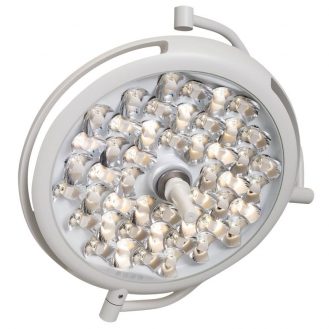When choosing a patient lift, it is important to take several factors into account, such as the capacity of the equipment, the lifting height, the intended configuration/installation, the type of drive system, and the location where it will be used.
- Capacity (maximum weight supported): The patient’s physical constitution and weight should be taken into account, particularly with bariatric patients. Patient lifts are available in different sizes, shapes, and materials. Certain motorized ceiling-mounted models can hold up to 250 kg and are suitable for bariatric patients.
- Lifting height/maximum reach: It is also necessary to consider the dimensions of the support structure, lifting and moving the equipment, as well as its maximum reach, taking into account the patient’s needs, degree of mobility, and condition.
- Configuration/installation: Patient lifts are available in three main configurations, namely with castors, wall-mounted, and ceiling-mounted.
- Patient lifts on castors: As with other lifts, the patient is placed in the transfer sling, which supports their body weight and in many cases includes a headrest. The transfer sling is held in place by straps suspended from a lifting arm. The lift is operated by a remote control. Lifts on castors are the most widely used because they offer a very practical solution. There are foldable models, which can be stored in small spaces and transported more easily.
- Wall-mounted patient lifts: These have a boom or lifting arm with a horizontal swivel to lift and move the patient to the right and left. They are also equipped with a transfer sling and adjustable handles. They provide a good level of safety and comfort and also don’t take up any floor space. However, it is essential to ensure that the wall on which they are mounted can support the weight of the equipment and the patient. If not, the wall can be reinforced so that the installation is safe.
- Ceiling-mounted patient lifts: These are also equipped with a sling that hangs from the ceiling, leaving all the floor space free. They offer more movement possibilities than other models because they have a motor that moves on rail systems fixed to the ceiling. The number and layout of the rails can be adapted to meet specific needs and reach different parts of the space. These models are ideal for autonomous use by the patient at home.
- Drive: There are three main types of drive systems:
- Place of use: It is important to take into account the place where you intend to install and use the lift, as there are models more suitable for hospitals, home use, swimming pools, etc.

Hill-Rom ceiling-mounted patient lift







